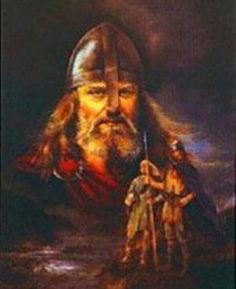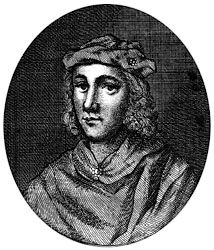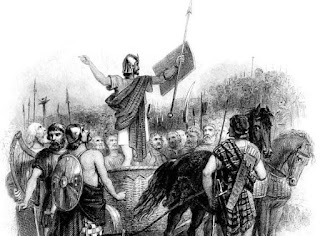The Blue Men
The Blue Men
The three Shiant Islands, where the amazing find of the priceless gold tore was made, lie in the waters of the Minch, east of Harris, and are known in Gaelic as the enchanted isles. Strong tidal currents are not the only hazard facing those who venture into these waters.
Legend has it that the Blue Men of the Minch live in the Sound of Shiant, and that they are either fallen angels who landed in the sea after being ejected from Heaven, or storm kelpies,
Sailors are advised to treat the Blue Men with great respect. They should speak to the Blue Ones in rhyming Gaelic couplets, or else be dragged to the bottom of the Minch.
A minister in the late 19th century recorded his meeting with one of them. He said "a blue-covered man, with a long, grey face, and floating from the waist out of the water came, so close, I could almost touch him.''
The strikingly attractive Shiants are a cluster of three islands and several islets made of basalt, formed by the eruption of Skye's volcano when Scotland and America split apart.
This has produced spectacular, natural columnar structures similar to those of Staffa and the Giant's Causeway, which are of great interest to geologists and lovers of the picturesque.
The main island is divided into two parts connected by a narrow neck of pebbles, which is covered by the sea during high tides or storms. In the 1690s, Martin Martin, the Presbyterian folklorist, said he had seen carvings made from the blue stone found there and noted the islands' fertility.
Mary's island is the most fertile of the three, surrounded by steep-sided cliffs with a rock stair leading to an arable plateau where farmers grew corn and grass and built a chapel to St Mary before the Reformation.
By the late 18th century, the only inhabitants of the main island of the Shiants were a shepherd and his family of four. But in a succession of appalling tragedies, the entire family was wiped out. First, the mother and only son fell to their deaths from the high cliffs while trying to drive sheep to safer grazing. Next, a daughter perished while collecting birds' eggs- and the father died of a broken heart.
This left one daughter alone on the island. Ten days went by before the weather was calm enough for her to try to row to Harris, a dangerous 12-mile crossing. She never made it back and the family's last survivor was never seen again.
In the 1820s, the tacksmen of the notorious Park estate on Lewis severely punished any fisherman who made the hazardous landing on the Shiants. It was assumed they were stealing sheep.
The islands were bought by Sir Compton Mackenzie in 1925 and sold 12 years later for £14,000 to the Nicolson family, which still owns them. They have been uninhabited since 1910, but by then the main island had been rat-infested for more than 30 years. Sir Compton imported cats to try to rid the island of the infestation but, so the story goes, the rats ate all the cats.
The next plan was to lay down rat poison, as had been done successfully on Ailsa Craig, off the Ayrshire coast. But then it was realised that these were not common brown rats but Rattus rattus, the old plague rats of medieval times.
As these black rats were no longer common in the British Isles it was decided to declare them a protected species. Now the rats, puffins - who are also protected - and many species of bird live in relative harmony, untroubled by humans.











Comments
Post a Comment